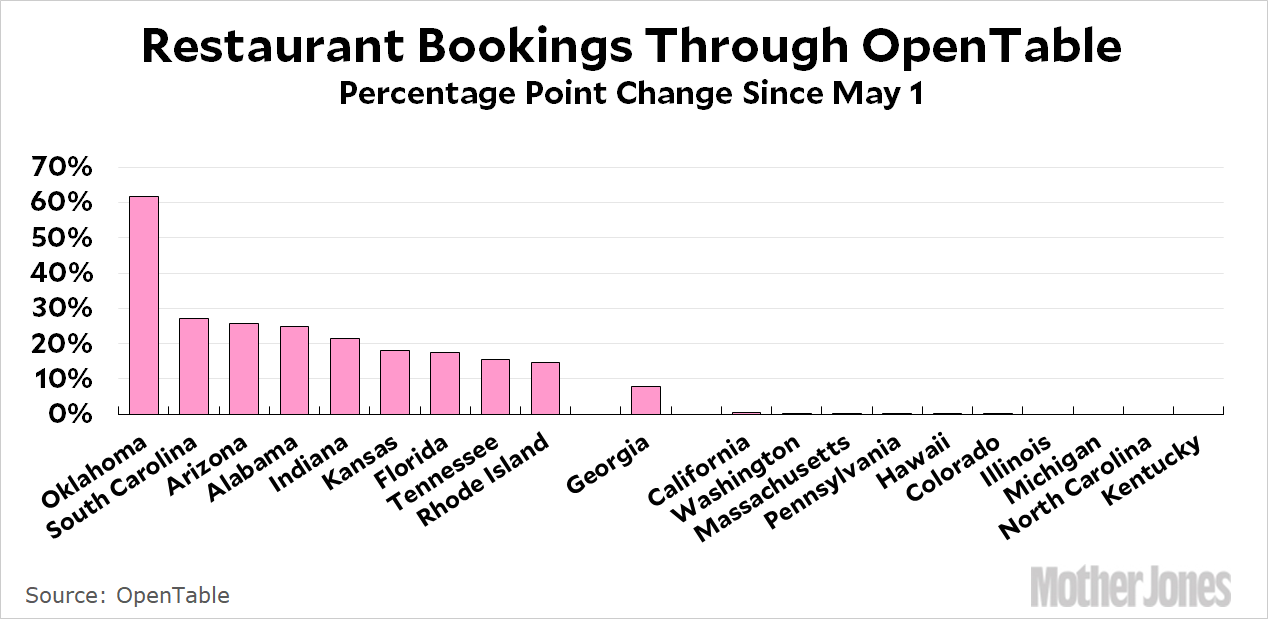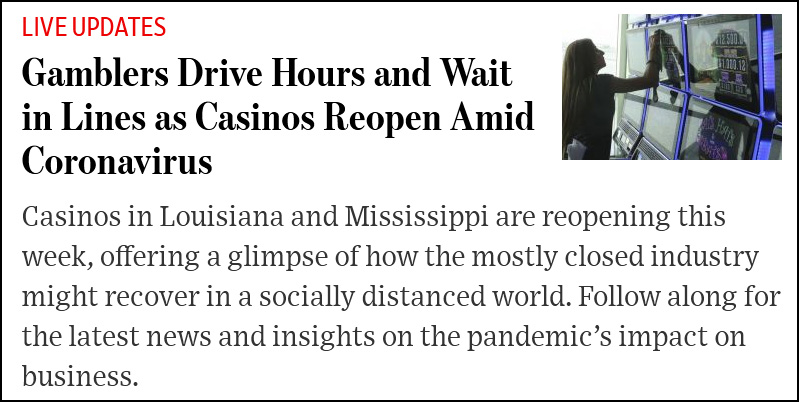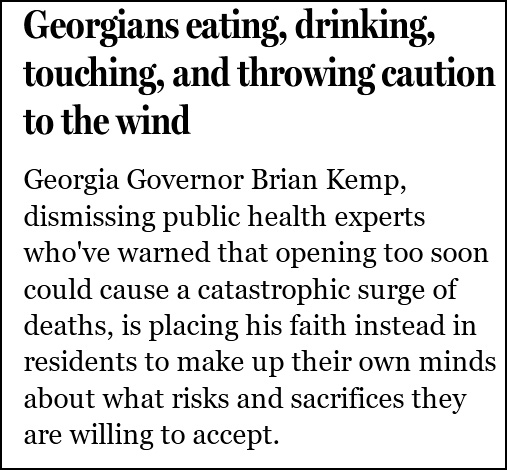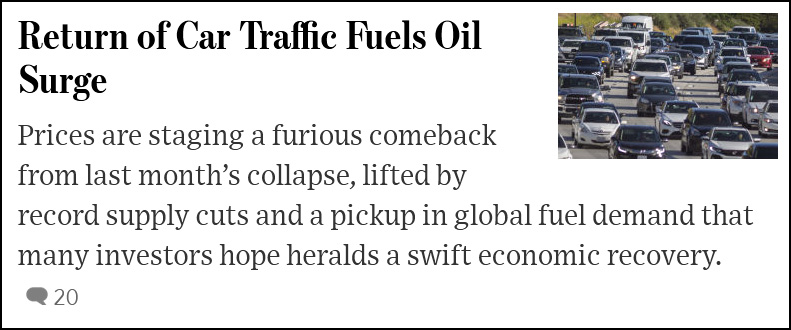I mentioned the other day that all projections of coronavirus spread going forward are based on estimates of how well various social distancing restrictions work. For things like school closures, this is easy to measure: schools are either open or closed, and we know the dates of both. Other things are not so easy. You can open up restaurants, for example, but that only matters if people actually start coming back. Are they? Here’s some data from OpenTable:

Oklahoma is in a league by itself for some reason, but aside from that there’s about a dozen states where restaurant reservations have increased by 15-25 percentage points since May 1. Likewise, there are a dozen or so where there’s been essentially no increase at all. This real-life data is what we need in order to figure out how compliance with (in this case) restaurant closures correlates with COVID-19 cases a few weeks later.
Headlines can provide another sense of what’s happening now that social distancing restrictions are being relaxed:





Not so good! And I can report from my morning walk that I saw only one other person wearing a mask. This was outside on a non-crowded path, so I don’t think there’s any real harm, but two weeks ago more than half my fellow walkers were wearing masks. On the other hand, in my local supermarket mask-wearing is near universal—though most likely because the supermarket itself requires it.
Anyway, both data and anecdotes suggest to me that nothing surprising is going on. We know the dates that various state governments have lifted restrictions, but we have only weak evidence of how quickly people are returning to their old lifestyle. My best guess is that it takes a couple of weeks for lifestyle changes to get to the point where they’re causing more infections, and another couple of weeks for death rates to start increasing. That’s just an amateur guess, though.













